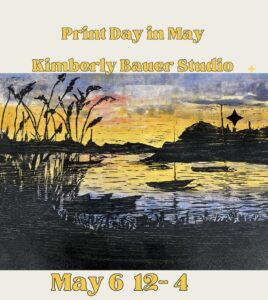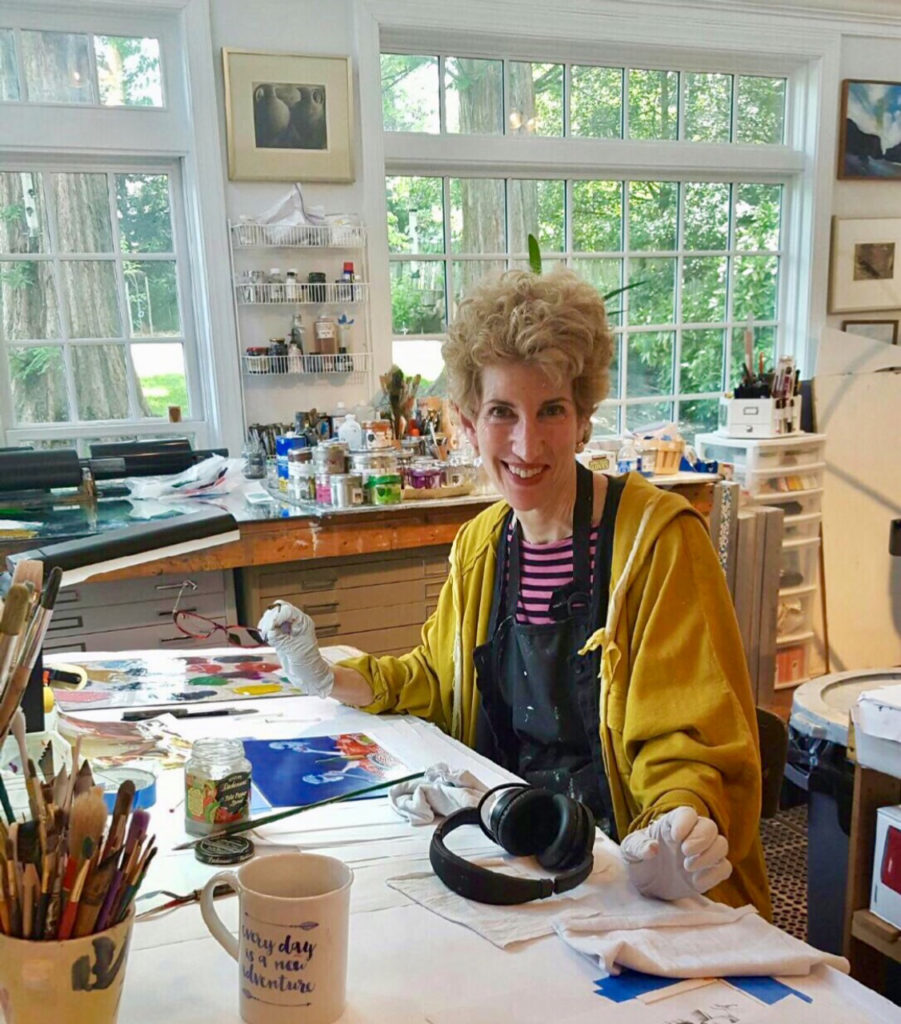
We’re very pleased that artist Sharon Wolpoff was keen to answer our ‘Seven Questions for a Printmaker’ series. A law graduate from the American University, where she also received her Masters in Fine Arts, she discovered printmaking during her junior year abroad while studying at the Tyler School of Art in Rome. Read on to discover how this training afforded her time and space to explore her own style and broaden her visual vocabulary.
Her work is signified by vivid, colour combinations and pared down composition with plenty of space to allow the onlooker to absorb the work. It’s both stylised and stylish ~ an overlooked water tank plays a starring role, as does an ordinary blue awning on an Italian street ~ she turns them into stunning oil paintings. Every day interactions are transformed into prints with movement and energy. Wolpoff is concerned with light and shadow which in clearly central to her own view of the world, “It is my desire to find a way of being in this world that illuminates others.”
1. Do you remember the first print you ever made?
My very first print was a potato print made in the first grade, at age 6.
My first printmaking class was at the Tyler School of Art in Rome in 1972,where I was studying painting. The instructor was John Dowell. It was tough and intimidating to comprehend the depth and breadth of what there was to learn, but John was terrific teacher. My first etching was about an escalating breakfast-time battle over hot chocolate between the elderly concierge at our pensione and one of the other artists. Forty-seven years later, I’m still making prints about the interactions of friends and family at the table.
2. Are you a trained artist, do you think that’s important?
Yes, I am a trained artist. It’s been very important to me to learn the craft(s) of artmaking because I enjoy exploring the processes, the chemistry, the history and the mystery of it all. I’ve also found it valuable to learn how to broaden my visual vocabulary, to refine my ability to comprehend and to find my own voice.
I have a BA in Fine Arts and a MFA in Painting from American University in Washington, DC.
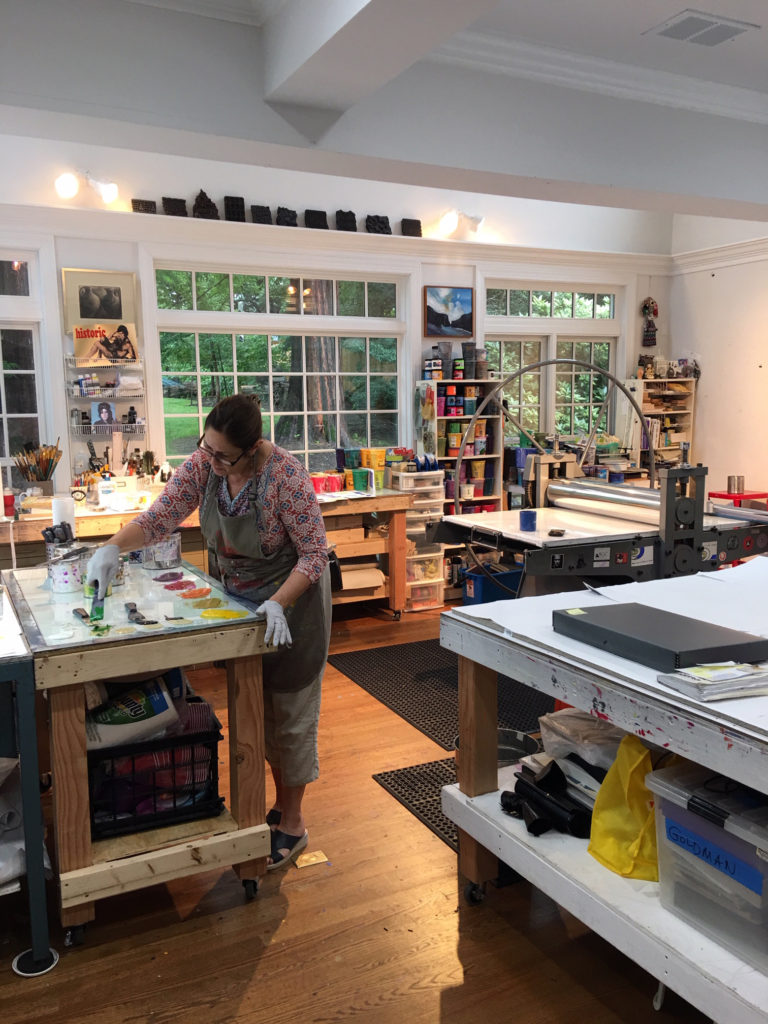
“The studio where I print is Susan Goldman’s ‘Lily Press’ in Rockville, Maryland.”
3. What type of printmaking techniques do you favour and why?
Given that my subject matter is my day-to-day world, where everyone and everything is fair game, my prints are essentially illustrated notes to myself, articulating with imagery what I’m not able to say with words. While I’ve had formal training in an array of printmaking techniques, I find that monotypes and monoprints are the best mode of expression for me. I’m a painter. Painting has a logical trajectory, but printmaking provides the opportunity to deconstruct things in order to reconstruct them. I find that the act of deconstructing creates space, allowing me to bring in more light- it sort of cracks things open.
4. What projects are you currently working on?
Rather than working on projects I work in series. For example, I enjoy capturing images of friends and family at the table. People tend to let their guard down over a meal, where interactions glide back and forth between ritual formality and breezy family shorthand. I’ve recently been immersed in work on a series of monotypes and monoprints called “The Mourners”, inspired by a meal grabbed after a breathtaking meeting with a funeral director.
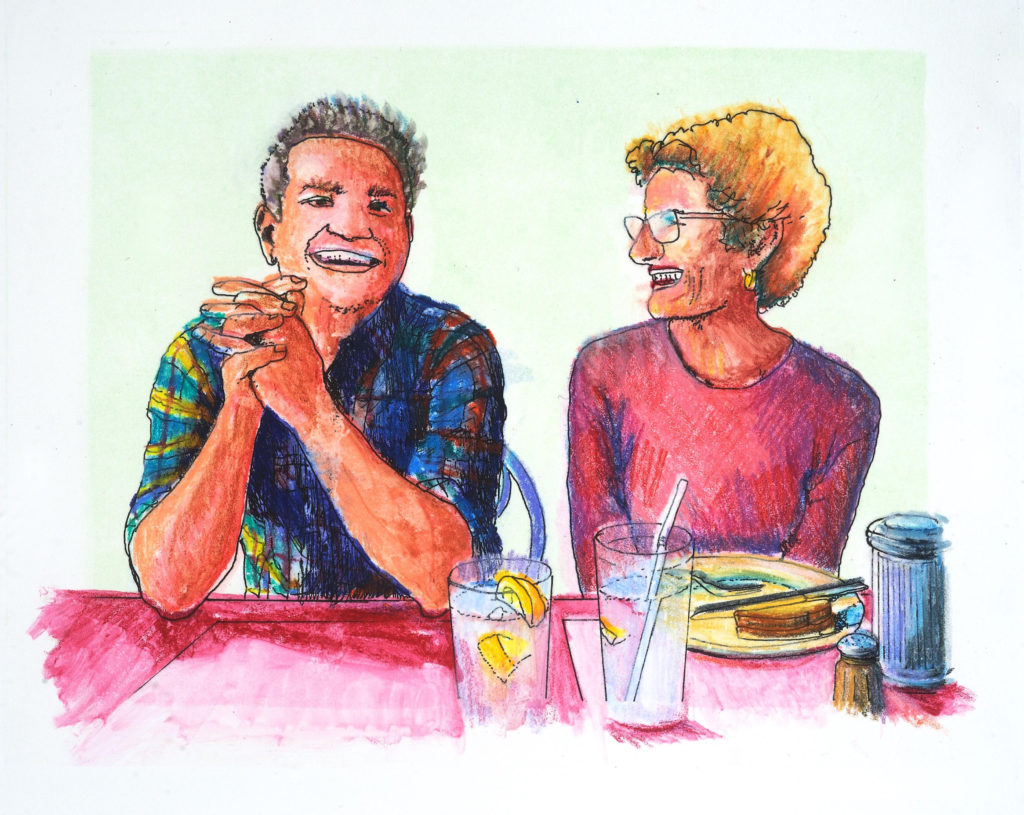
5. What drives you to make prints?
It is my desire to find a way of being in this world that illuminates others. Because illumination is a concept that can reveal itself in many ways, one of my favorite means of exploration is by virtue of printmaking. Specifically, I’ve found that the process of creating monotypes is responsive, immediate and intuitive, and that the element of speed required to do the work can be both liberating and enlightening.
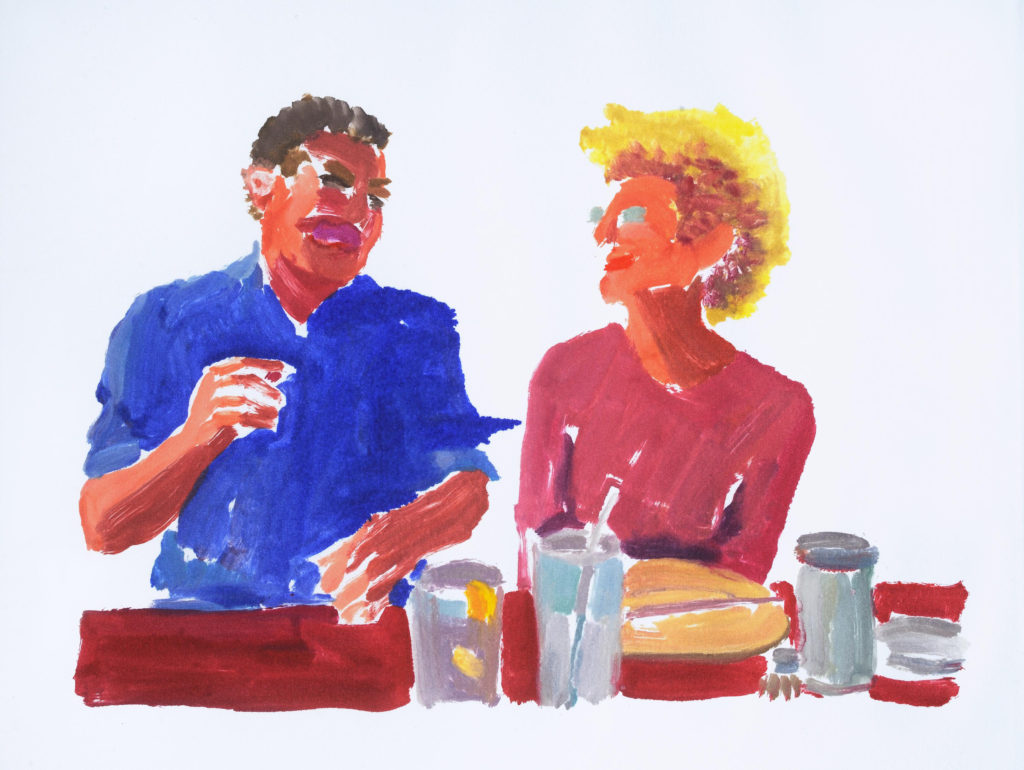
6. Who has been an important mentor in your life?
Jack Rasmussen. We were art students together at American University in the early 1970’s, he is now the Director and Curator at the American University Museum. He’s been a dear friend, a guiding light, a noble adversary and a relentless source of support, inspiration and humor.
7. Which art materials do you favour and why?
Oil Based Inks on Plexiglass Plates. I like the colors, the feel and smell- the sensuous quality of the oil based inks.
Water Soluble Media.I like crayons and color pencils for ‘gum arabic’ mylars.
I’ve recently discovered Smart Plates or Pronto Plates as a terrific monoprint tool.
For Hand-Coloring prints, in addition to any water soluble medium I also like colored India inks and oil pastels.
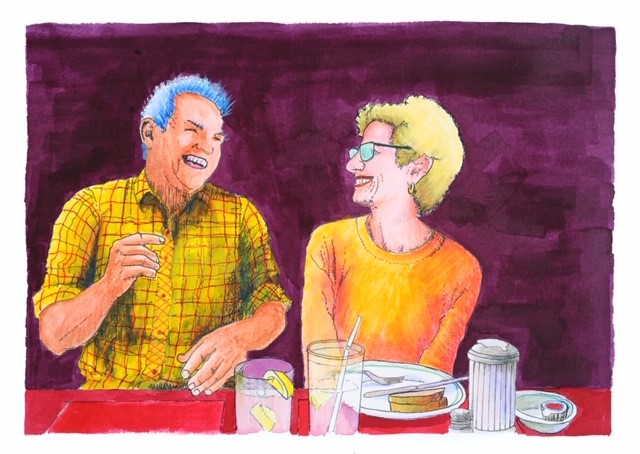
With enormous thanks to Sharon for answering this short Q&A. Find out more about her incredible work at www.sharonwolpoff.com
If you would like to get involved, please feel free to answer our questions and send them to printdayinmay@gmail.com

